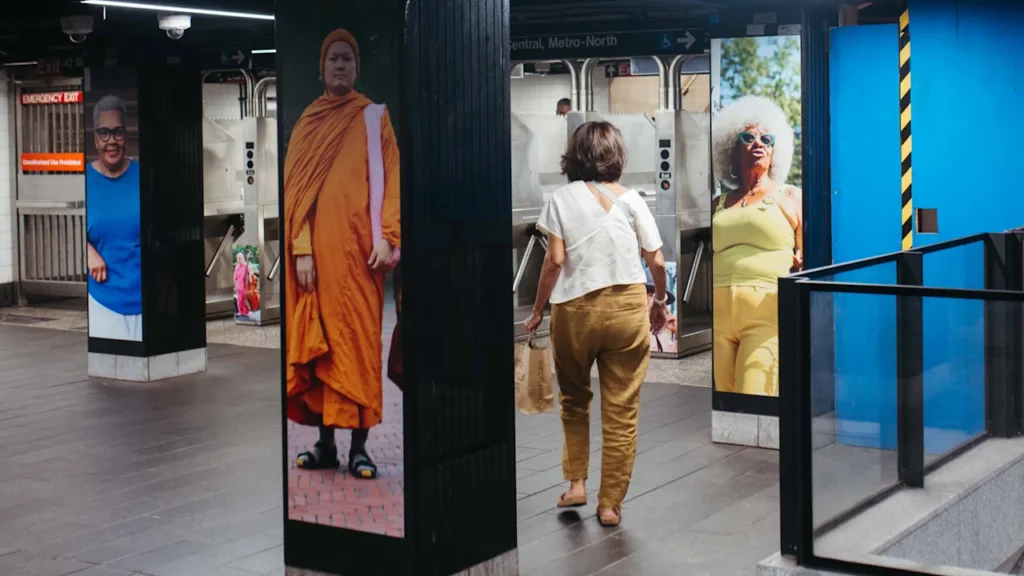
Commuting in New York City can be a relentless sensory overload—the hustling, the pushing, the yelling, the ads whirling from every side. Getting to work can feel like a frantic race of people trying to escape the train station all at once.
While the city hurtles past in a blur, Brandon Stanton has stopped to write it a love letter—on the walls of Grand Central itself. For the first time, the terminal and its subway station have been completely cleared of flashing advertisements and replaced with art.
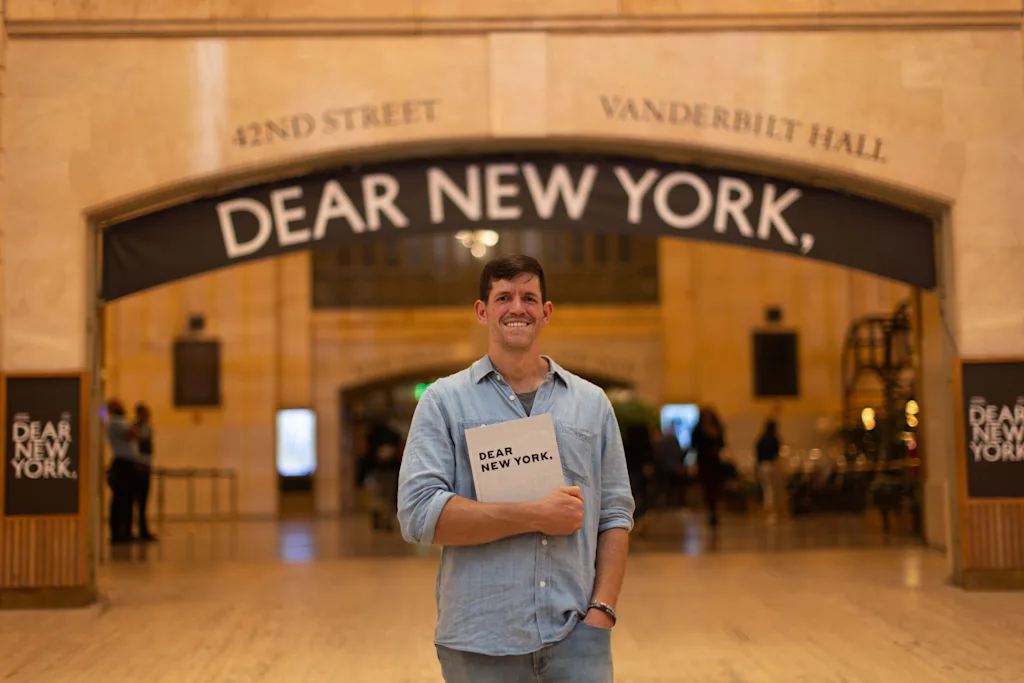
More than 150 digital screens now display thousands of portraits and stories from Stanton’s Humans of New York—the largest and most diverse collection of New York City portraits ever created by a single artist, featuring over 10,000 photographs and interviews with people all around the world.
Running through October 19, Dear New York is a first-of-its-kind immersive experience that vividly celebrates the people of New York. Located in a landmark through which more than 750,000 people pass daily, the station serves as a crossroads for locals, commuters, and tourists alike, allowing the art to reach and touch people from all walks of life.
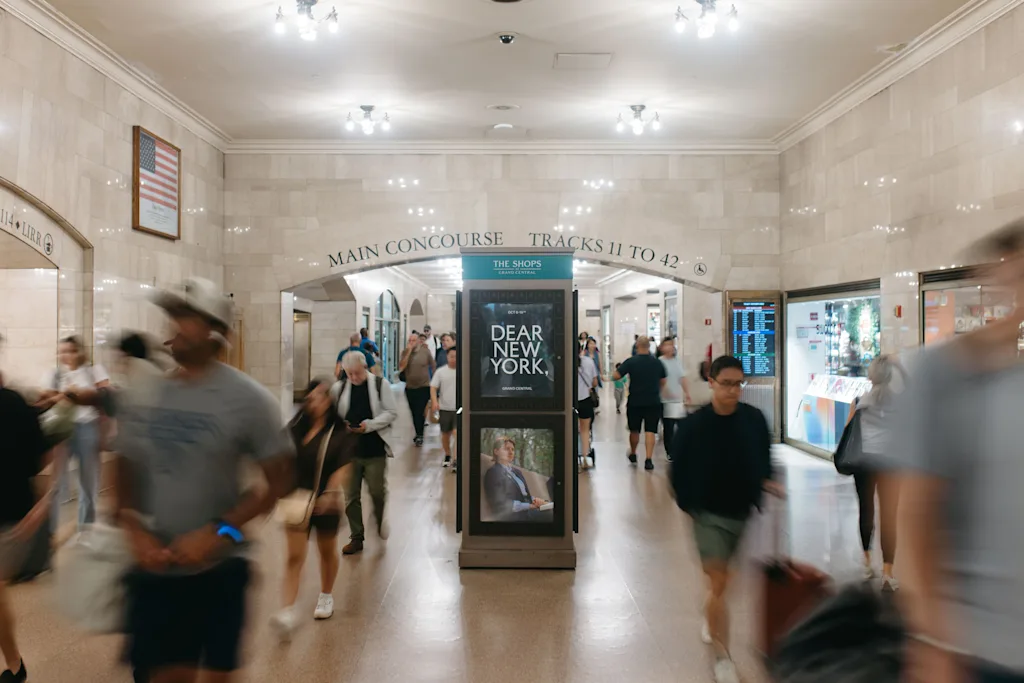
The process of clearing out the space and replacing it with art, Stanton explains, was monumental. “I would say it took 1,000 ‘yeses’ to make this happen. One ‘no’ could have completely made it fall apart,” he says.
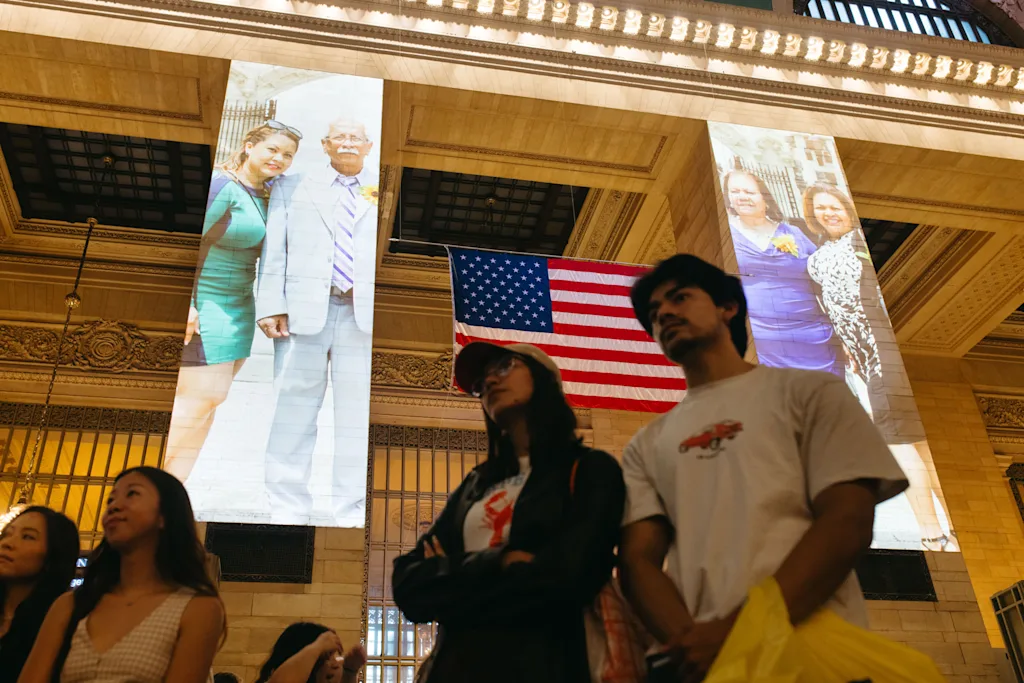
In a six-month sprint, Stanton had to align a tangle of stakeholders—from the MTA and Metro-North Railroad to Outfront Media and the State Historic Preservation Office. “It was a mix between a commercial and a political negotiation,” he says.
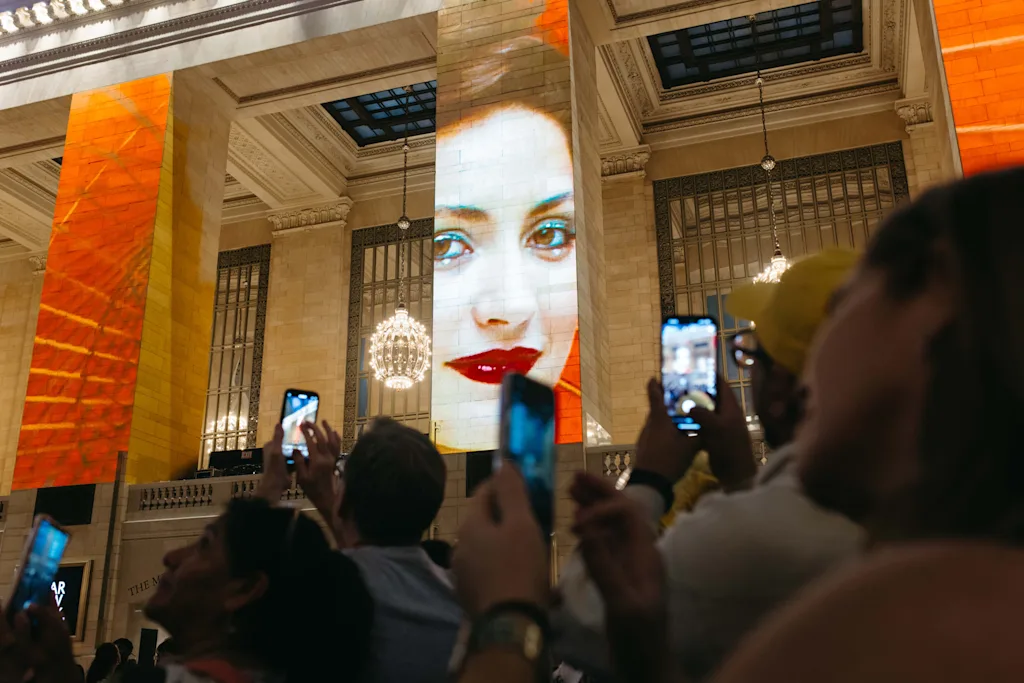
Outfront Media owns 80% of the screen time in Grand Central Station and is driven solely by profit, leaving Stanton with no choice but to negotiate pricing to gain access. The remaining 20% of display space is controlled by the MTA and usually used for public service announcements.
“I had to persuade this bureaucracy that what I was doing was philanthropic for the city, and worthy of this unprecedented space,” Stanton says. “Nobody had ever spent this kind of money on something completely unsponsored before.”
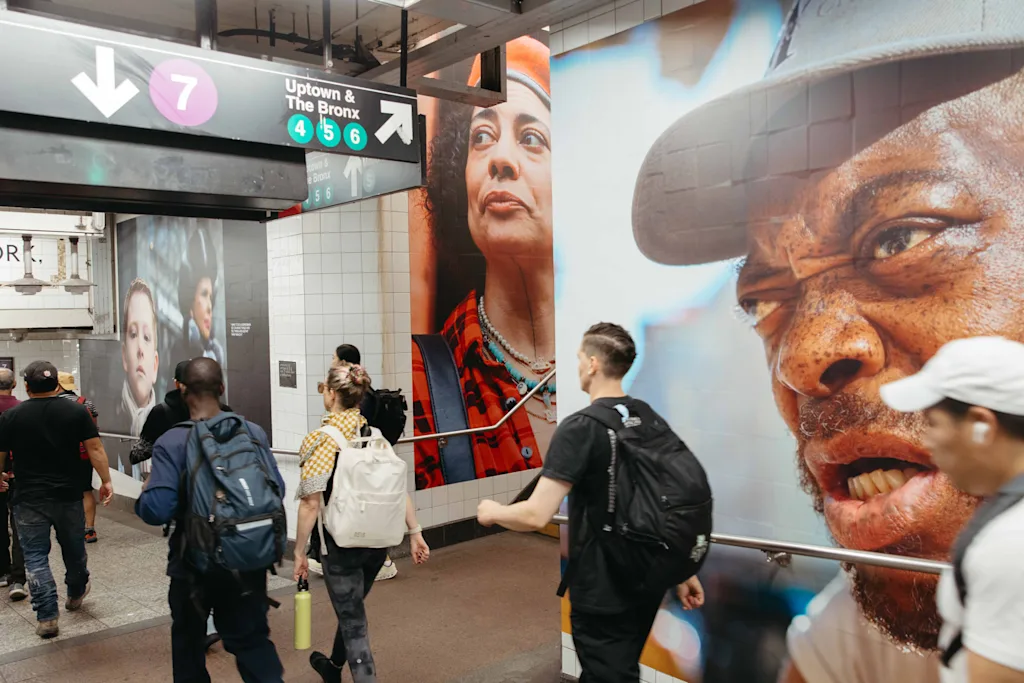
Without disclosing exact figures, Brandon noted that he funded the installation entirely from the savings he had built over 15 years from his Humans of New York photo blog and book—with no sponsors involved.
Negotiations alone took three to four months, he recalls, but throughout the arduous process, “There were some early believers in the MTA. I ran into so many dead ends and walls while I was trying to make this. But at each point, there would be a person who really believed in it, who gave me energy and strength when I needed it most.”
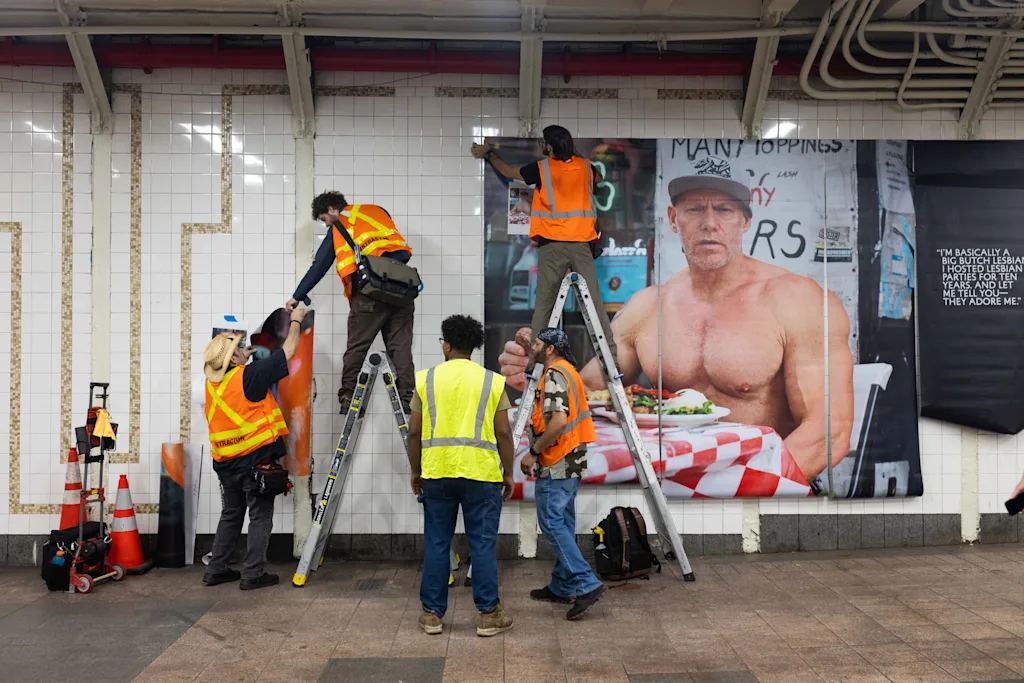
He singled out Dorit Phinizy, director of events at Grand Central, as the first person to see him not as a potential revenue source, but as “an artist trying to achieve a vision—and thinking about how, within the confines of my job, I can help and contribute to this vision.” Phinizy’s name appears fourth in the credits as “chief creative consultant,” for her shepherding the project through the layers and layers of MTA approvals.
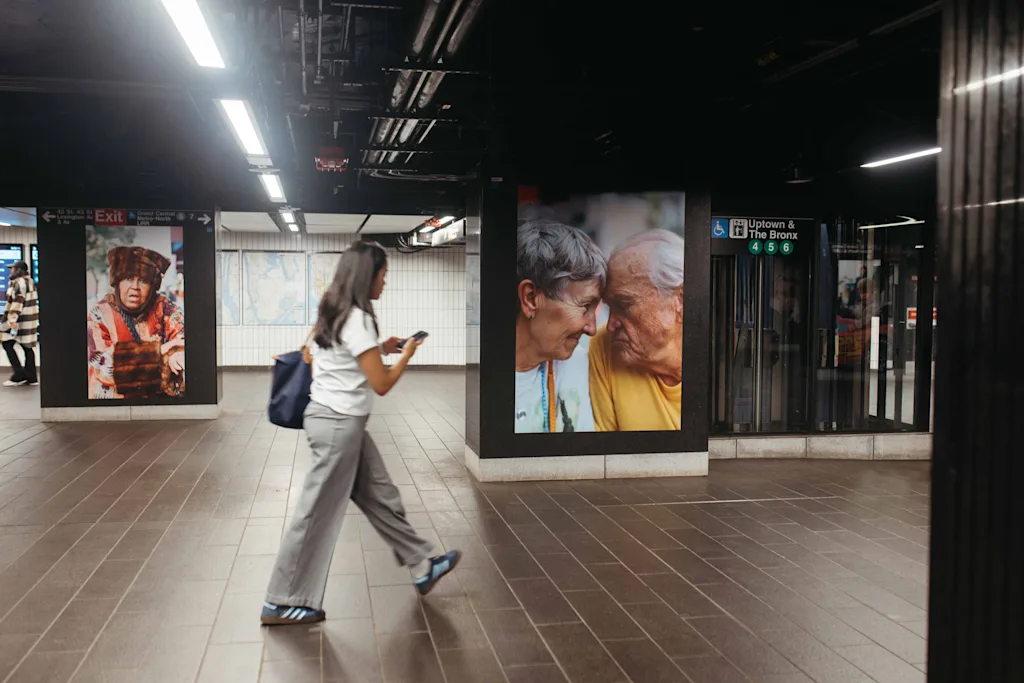
What began as a solo effort quickly expanded into a major collaboration. Stanton later brought in Broadway designer David Korins, who donated his time, and the design firm Pentagram, which contributed hundreds of thousands of dollars in design services, including 3D mapping of the subway. The Juilliard collaboration for the musical component was put together in just a week.
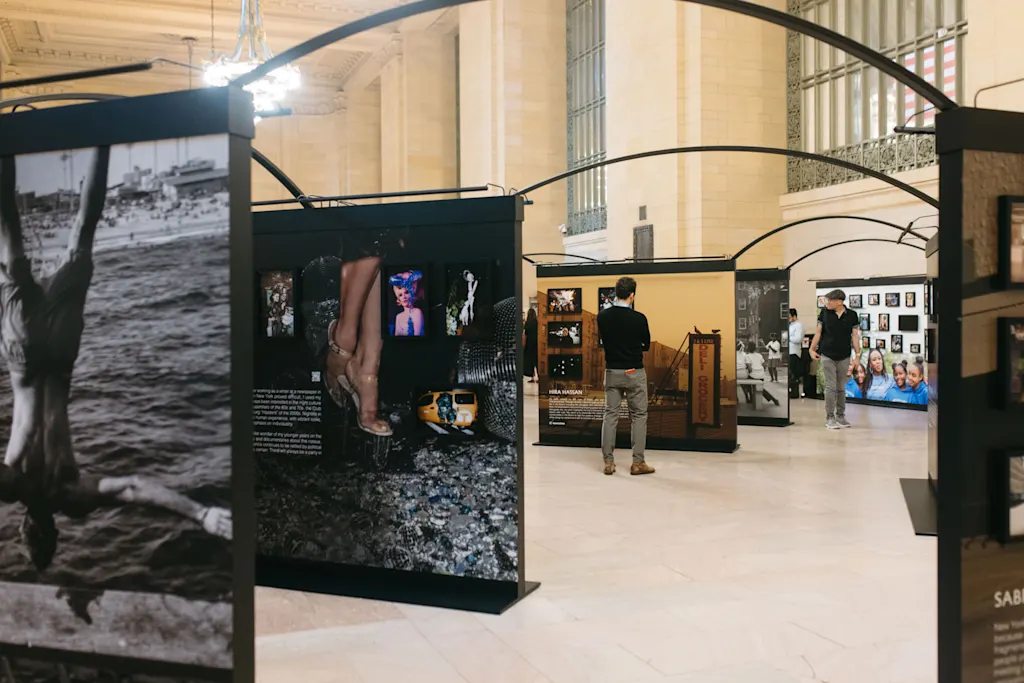
The art now stretches across every corner of Grand Central. In the main concourse, 50-foot projections wrap around soaring arches and marble columns, immersing passersby in the city’s stories. Subway tunnels, stairwells, and side corridors come alive with hundreds of digital screens, each capturing faces, expressions, and snippets of daily life.
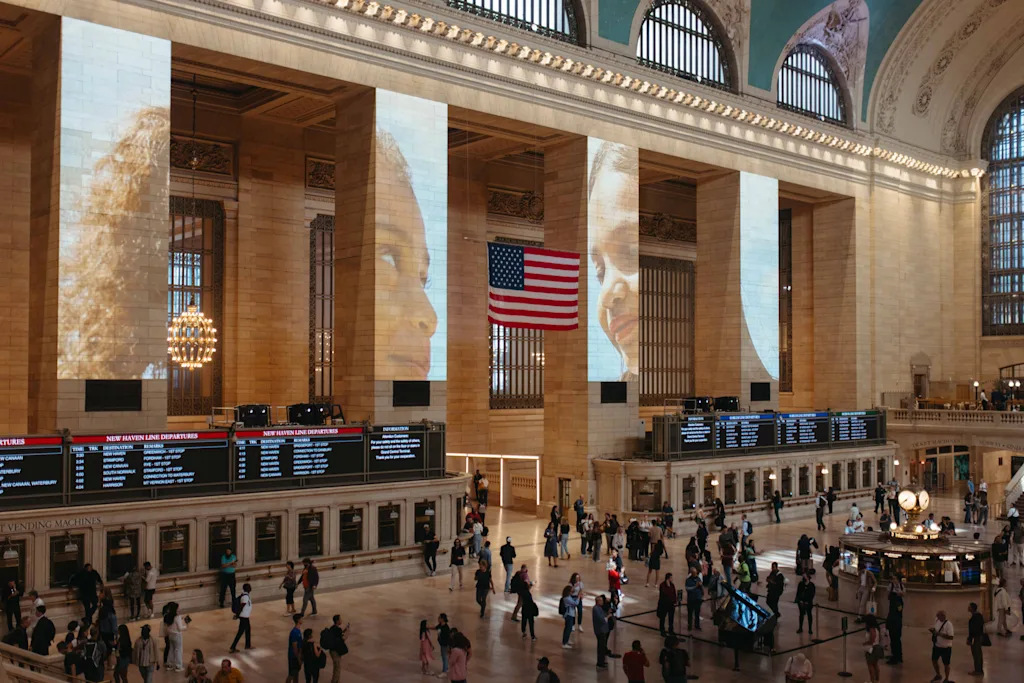
Vanderbilt Hall hosts a community gallery featuring work from more than 600 public school students alongside emerging local artists. The crowning touch comes from 100-plus hours of live music, as 50 Juilliard students and alumni perform classical, jazz, and collaborative piano pieces on a Steinway grand.
In the surge of commuters, Stanton explains: “Many of my quotes on Instagram are much longer, but I distilled hour-long interviews into quick, digestible moments that anyone can absorb even while walking by.” He adds: “And watching people walk through this busy, crowded place and actually stop to read—it’s very gratifying.”
